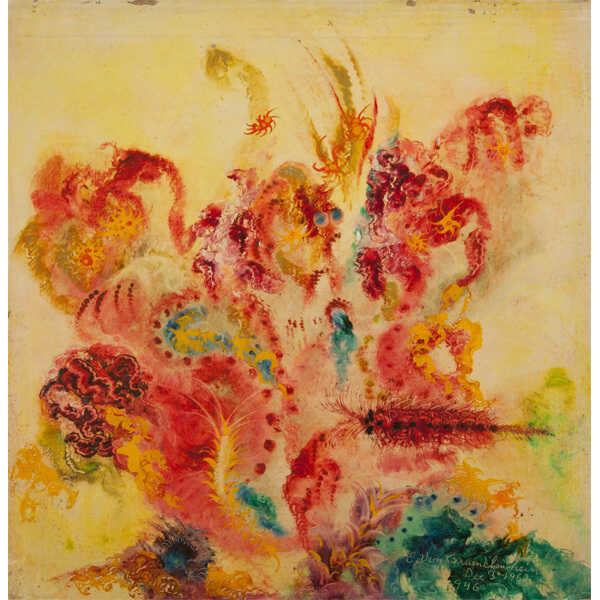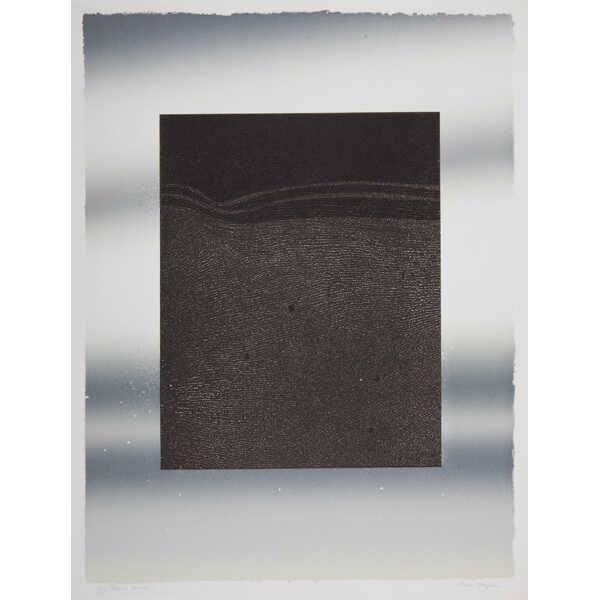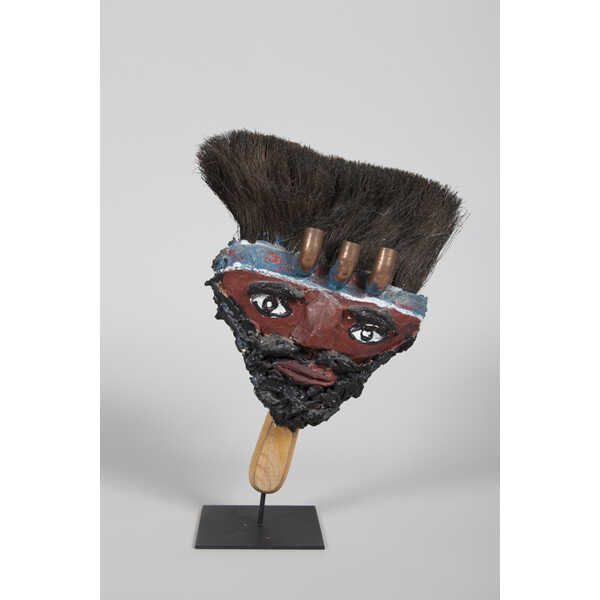March 14–August 4, 2024

Eugene Von Bruenchenhein. Untitled, 1962. Pigment on cardboard. Collection of DePaul Art Museum, gift of Jean and Lewis Greenblatt, 2009.199.

June Wayne. Dawn Wind, 1975. Color lithograph. Collection of DePaul Art Museum, gift of Robert Conway, in honor of Belverd and Marian Needles, 2012.154.

Mr. Imagination. Paintbrush Portrait, 1992. Mixed media. Collection of DePaul Art Museum, gift of Chuck Thurow, 2016.92.
The Image Pool explores works in DePaul Art Museum’s collection typically described as “folk,” “self-taught,” “outsider,” or “intuitive,” due to their creators’ seeming distance from the institutional sanctions of art schools, museums, galleries, and mainstream commercial success. Intentionally problematizing the insider/outsider distinction, this exhibition instead frames these works as exemplary of what it means to be a contemporary artist rather than an exception.
The six artists on view—Eugene Von Bruenchenhein, Mr. Imagination, Marva Lee Pitchford-Jolly, June Wayne, Derek Webster, Joseph Yoakum—do not neatly fit into pre-made categories. Some, such as Yoakum, took up drawing later in life and was soon championed by established artists for his imaginative landscapes depicting all the places to which the artist had supposedly traveled. Others, such as Von Bruenchenhein, produced thousands of works in various media over decades that failed to capture the attention of gallerists and collectors before his death. Wayne, by contrast, achieved recognition at an early age despite dropping out of high school to pursue art and would later become one of the most important American printmakers of the 20th century. All, however, asserted themselves as artists—culling aesthetic material from personal and imagined histories, the ambient culture, and the detritus of the modern world—in spite of the institutions and infrastructure that still to this day value pedigree, training, and financial success above all else.
According to philosopher Jacques Rancière, a fundamental shift took place toward the end of the 18th century: aesthetic hierarchies that had once organized producers, materials, and subject matter began to collapse. From that moment forward, this “aesthetic revolution"(1) meant that anybody could be an artist without needing to possess formal training, make use of the materials typically associated with fine art, or treat themes and subjects prescribed by political and religious authorities. The boundaries between life and art would henceforth be the site of a constant process of renegotiation. Coupled with technological shifts in the production and distribution of images, no person—no matter how far removed from the artworld(2)— could be said to exist outside of “the image pool of his or her society."(3)
The Image Pool is curated by David Maruzzella, Collection and Exhibition Manager, with Chiara Conner, Zoë Hamilton, and Bernardo Soares and organized by DePaul Art Museum as part of the Learning Studio initiative. Support for The Image Pool is provided by Chuck Thurow and the Terra Foundation for American Art.
(1) Jacques Rancière, “The Aesthetic Revolution and its Outcomes: Emplotments of Autonomy and Heteronomy.” New Left Review 14 (March–April 2002): 133–51.
(2) Arthur C. Danto, “The Artworld.” The Journal of Philosophy, Vol. 61, No. 19, (1964):571–84.
(3) Arthur C. Danto, “The Artworld and its Outsiders,” in Self-Taught Artists of the 20th Century: An American Anthology (San Francisco, CA: Chronicle Books, 1998), 26.